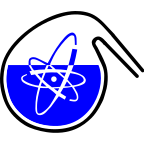Speaker
Description
Recent years some alternative techniques are being developed for solid state matrixes producing for immobilisation of liquid and mixed state radioactive wastes. Magnesium-potasium-phosphorus ceramics (MPP ceramics) matrix are considered to be a promising solid state matrix for immobilisation of liquid and mixed state radio-active wastes as alternative to cement and glass matrix. The major advantage of this matrix is low leach rates since it is a structure analogue of natural mineral K-struvite (MgKPO4•6H2O). Another technological advantage is low temperature synthesis technique in comparison with the glass form production.
There are some difficulties in MPP ceramics syntesis. First of all it is high reac-tion rate and heat emission during reaction. High amount of heat produced during synthesis could cause water boiling and water loss while it is necessary for dissolving sodium hydrophosphate. It could be problematic to stir fast large amounts of reaction mixture, especially in case of heterogenic radioactive wastes. In this regard method of additions could be useful. In this case small portions of chemicals are constantly added to the reaction volume until the required ceramics volume is met.
Species of MgO play important role in this process. MgO should be low soluble and provide low rare leach of cation to the liquid phase during formation process. Heating MgO at 1200-оС provides formation of crystalline phase of periclase which is stable and promoting for ceramic synthesis. Usage of amorphous MgO is possible only as dry powder course it hydrolises while being put in water with forming low binder component. The lack of water in the reaction mixture causes formation of K2Mg3(P2O7)2(H2O)10 phase in addition to MgKPO4•6H2O while exceed of water cause formation of Mg2KH(PO4)2(H2O)15 phase.
Powder Roentgen diffraction of MPP ceramic samples revealed that oxide com-ponent added in system in stechiometric ratio does not react in total and some amount is left in the system as inert filler. In this case it is promising to replace part of MgO with mineral additions to increase durability of material.
Keeping MPP ceramic samples for one year decreases leach rate to 10-6-10-5 g/sm2*day that is comparable with phosphate glass and is one order of magnitude less than leakage rate of cement matrix. It is shown that durability of MPP ceramics increases with time.
During development of MPP ceramic production major criteria such as content and component’s addition scheme, technic and equipment requirements for produc-tion were determined. As a result of applying of test facility 300m3 of low level radi-oactive wastes was produced and encapsulated in containers.

